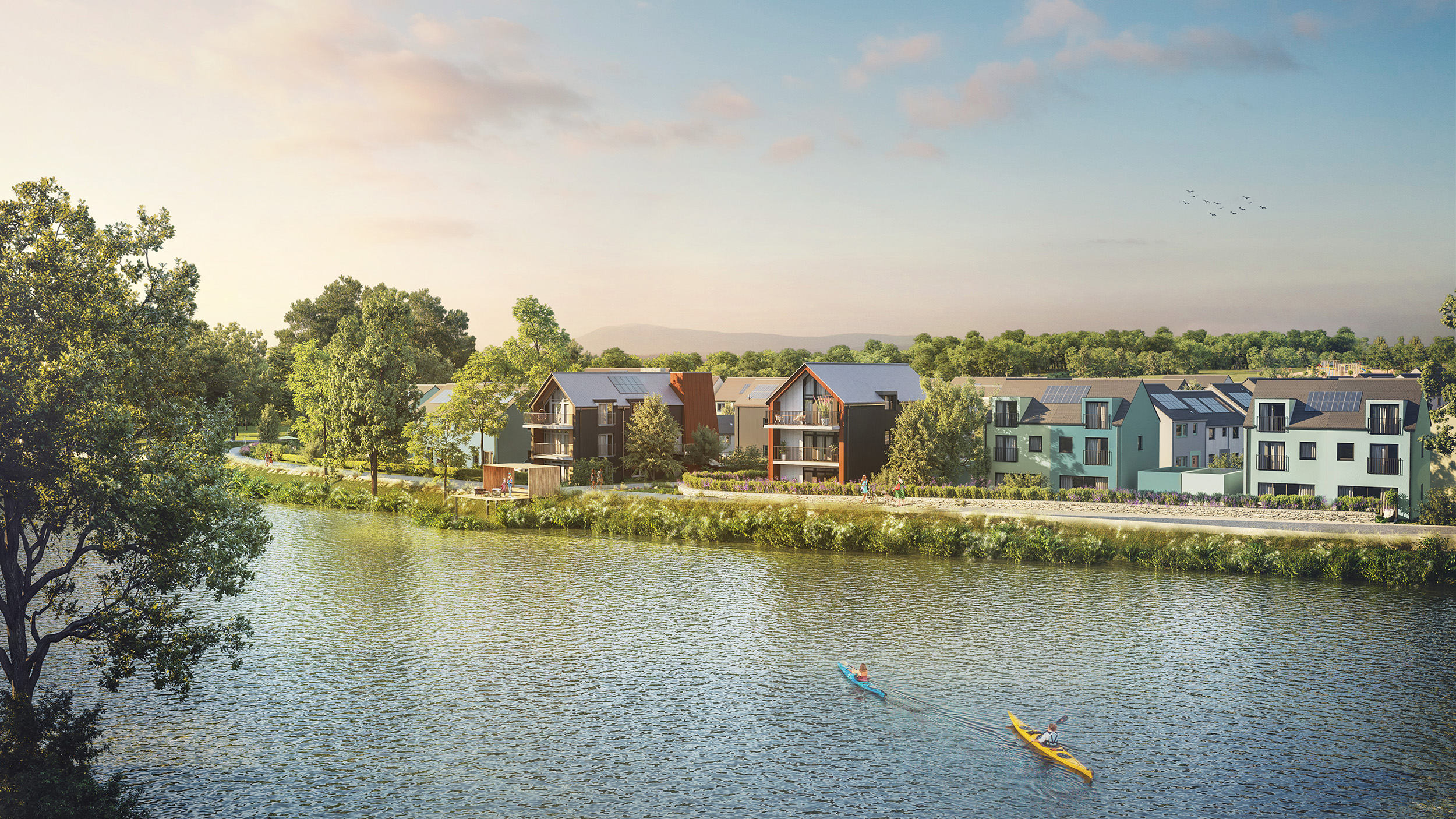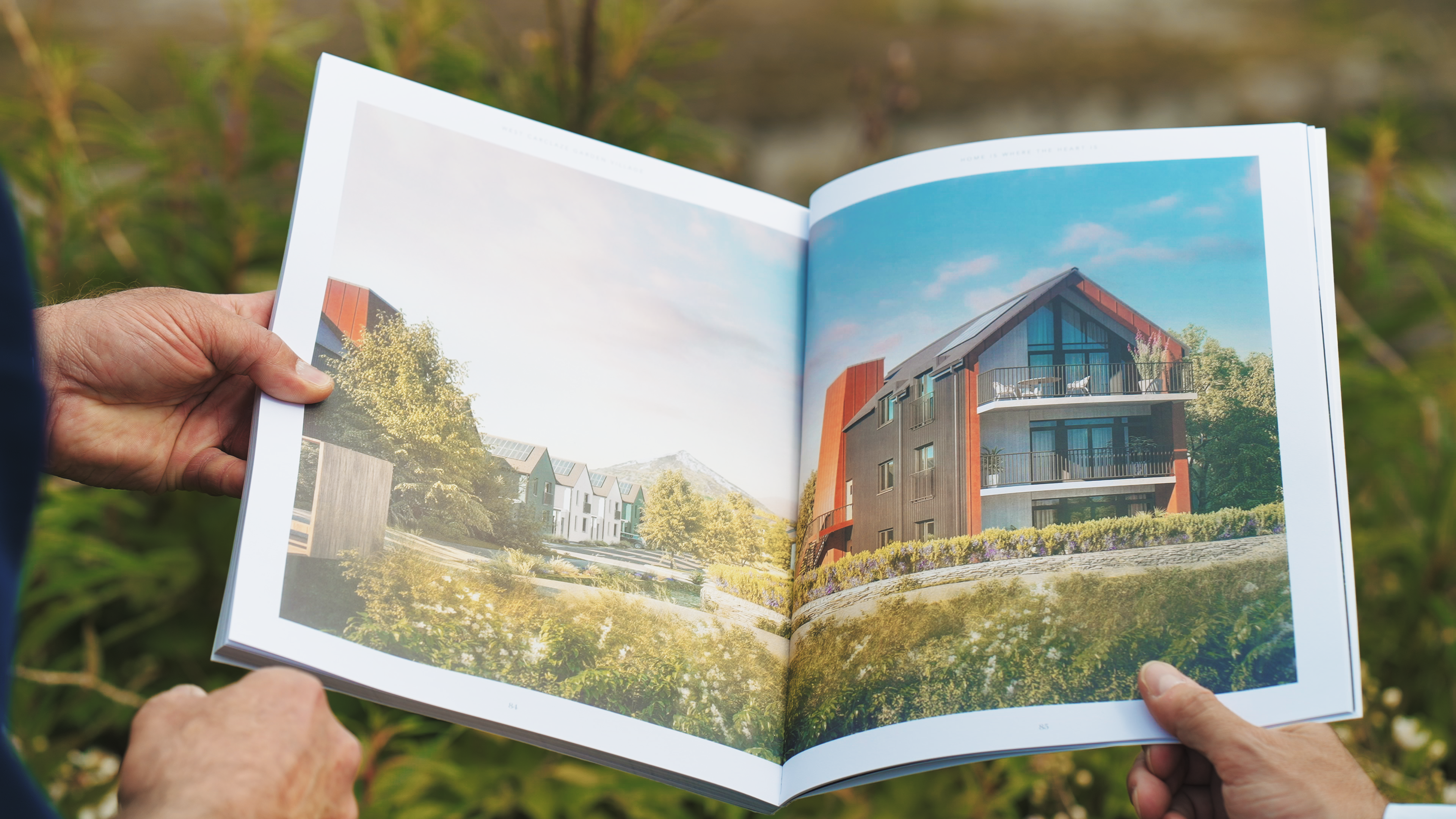Jimmy Close, sustainability lead at MiTek, takes a look at some of the UK’s most sustainable new housing projects. See the next generation of low-carbon housing for yourself.
Embracing sustainability has led UK construction to some of the world’s most impressive and inventive residential projects. Better still, it’s the industry itself proactively driving these changes. There’s a lot to shout about; when better than New Homes Week to look at what’s really possible now?

Realising a community’s net zero vision
The future might look something like West Carclaze Garden Village, Cornwall. Set against some 500 acres of clay country, 1500 new homes are being created using the latest low-carbon technologies. The average existing UK property has a D rating on its energy performance certificate (EPC). Homes in West Carclaze score a perfect A.
Sustainability is etched into every facet of the project. Advanced solar energy storage underpins modern quality of life features like temperature and air quality controls. Natural insulation is far beyond recommended industry standards, thanks to a fabric-first design approach.
Components like our Posi-Joist cassettes with their open metal web structure enable MVRH systems to be installed across every home and optimise the use of space. From these fine details, all the way up to planting half a million trees, West Carclaze makes a bold statement.

Putting sustainable construction to the test
Energy House 2 is another project where we’ve been lucky enough to see the force of the industry’s initiative first-hand, thanks to the work of our client Pasquill who contributed the timber engineered components to this fantastic project and will completely change the way we think about the construction of new homes.
A partnership between Barratt Developments, Saint-Gobain and Salford University is working to push the envelope for eco-friendly housebuilding.
Built inside a specialist climate chamber, the home is set to undergo rigorous testing to see how it copes with extreme weather conditions. How will the latest renewable energy technologies fare when temperatures rise or fall dramatically? What impact will that have on residents?
Data from the project will be critical in refining how we build for the future. As the realities of climate change start to bite, knowing how to adapt is key. Looking to the future, we see more and more ambitious ideas like these going from vision to reality.
As an industry, we still have a long way to go. But when we look at what’s been achieved in only a handful of years, there’s ample room for optimism.
